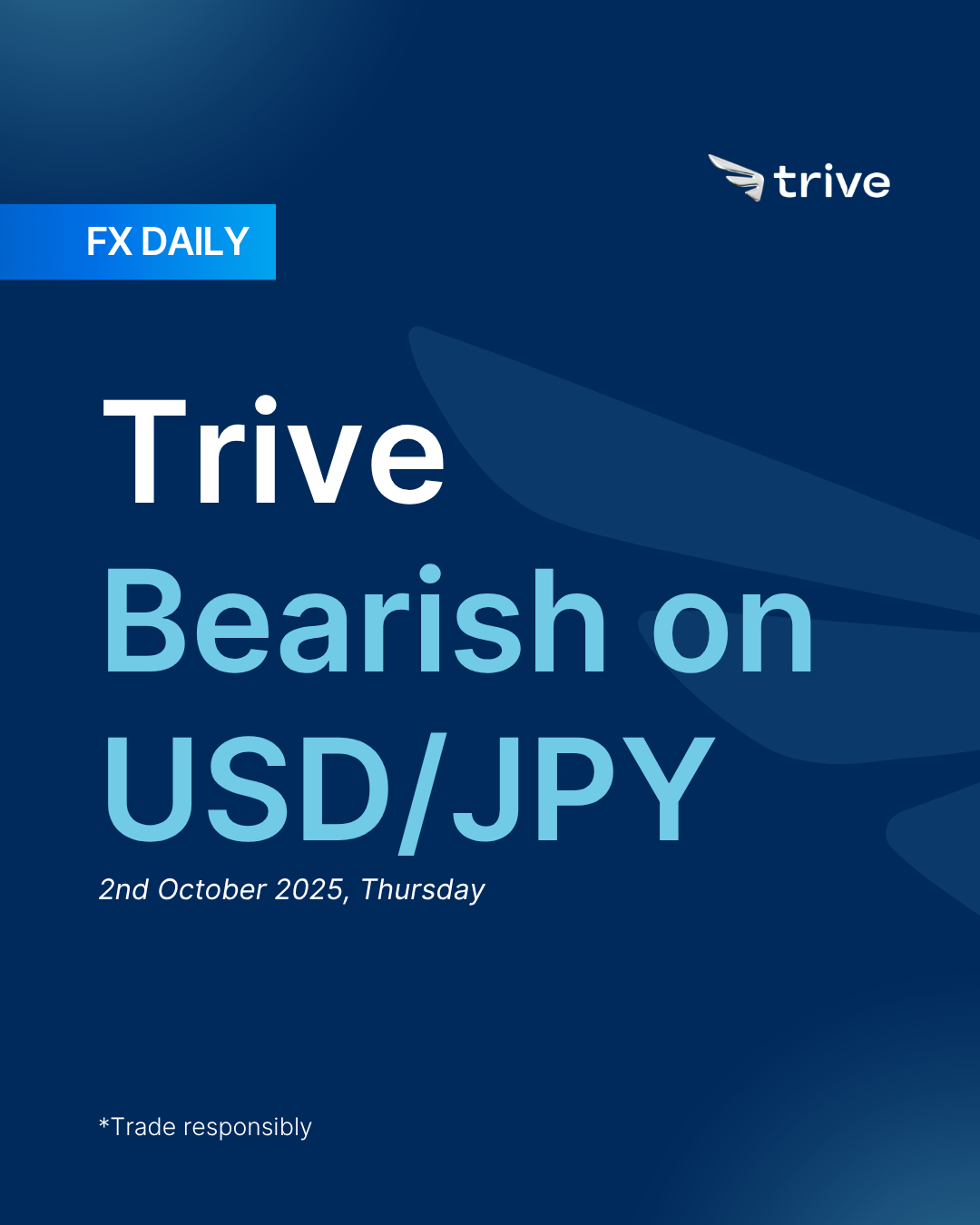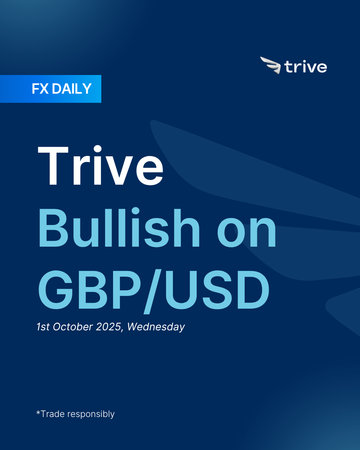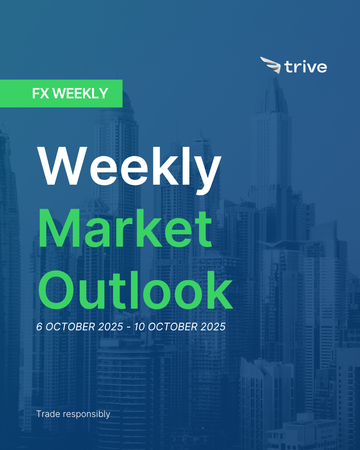FX Daily: Trive Bearish on USD/JPY

The yen slid to the brink of 150.00 as surging US yields and strong data widened the rate gap, overwhelming local drivers. Tokyo CPI softness trimmed near-term BoJ hike bets, but markets still price tightening by year-end. With USD/JPY breaking key moving averages, the risk of intervention grows if 150.00 is breached. Near term, elevated US yields keep pressure, but structurally, BoJ normalization, wage gains, and a strong current account support medium-term yen strength once Fed easing arrives.
JPY: Focus on Election this week
The Japanese Yen was pummeled this week, driven almost entirely by a dramatic widening of the US-Japan interest rate differential. USD/JPY began the week consolidating below 148.00 with domestic attention on the upcoming LDP leadership election, but the narrative was hijacked mid-week by soaring US Treasury yields and a resurgent US Dollar after a barrage of strong US data. This dynamic overwhelmed domestic factors and sent USD/JPY surging through its 50-day and 200-day moving averages, rocketing to a peak just shy of the psychologically important 150.00 level. The Yen finished the week as one of the worst-performing G10 currencies and was effectively at the mercy of US monetary policy expectations.
Flash PMIs for September on Wednesday showed deterioration across all components, and commentary highlighted persistent cost pressures and elevated inflation, which weighed modestly on the Yen. The week ended with softer-than-expected Tokyo inflation on Friday, and this key leading indicator for national inflation reduced immediate pressure on the Bank of Japan to hike rates, contributing to the Yen’s underperformance.
Rate-hike expectations for the BoJ were highly volatile. Mid-week, former BoJ member Adachi said an October hike “cannot be ruled out,” and markets briefly priced that outcome as a coin-flip. By Thursday, conviction had grown, with markets assigning a 72% chance of a 25-basis-point hike by year-end. After Friday’s soft Tokyo CPI, the probability of a hike at the October meeting fell back to around 57%. Minutes from the August meeting, released Thursday, showed policymakers had discussed the case for future hikes, though the timing remained divisive.
Domestic politics and geopolitics added color without changing the main story. Early in the week, the LDP leadership race drew focus after an FNN poll showed dovish candidate Sanae Takaichi as the front-runner; her proposals for tax cuts and spending measures contrasted with the more fiscally prudent stances of Koizumi and Hayashi, and the election is scheduled for October 4. TV Asahi reported that US President Trump plans to visit Japan on October 28 or 29, though the government has not confirmed the trip.
Market sentiment was dominated by yield differentials. The surge in US Treasury yields widened the interest-rate gap with Japan and strengthened the Yen’s role as a funding currency, which spurred aggressive selling. The rally in USD/JPY was also technically significant as it broke decisively above its 50-day moving average near 147.68 and its 200-day moving average near 148.54, which accelerated the move. The pair ended the week pressing the 150.00 area, a major psychological and technical threshold that, if breached, could open the door to further upside and potentially draw verbal intervention from Japanese officials.
The yen endured a bruising week as soaring US Treasury yields and a resurgent dollar overwhelmed domestic factors, sending USD/JPY to the brink of 150.00. The move was technically significant, with the pair breaking above its 50- and 200-day moving averages, which accelerated the selling. While soft Tokyo CPI reduced immediate pressure on the BoJ, rate expectations remain volatile, with markets now pricing a hike by year-end. Domestic politics and the LDP leadership race added noise, but the widening rate gap with the US was the dominant driver.
Near term weak bearish. The surge in US yields has widened the policy gap, reinforcing the yen’s funding role and leaving it vulnerable to further downside near term. Even though the BoJ minutes showed debate on hikes and rate expectations have moved higher, the immediate impulse still comes from the US side, where resilient data have lifted front-end pricing. If US yields remain elevated into this week’s jobs report and ISM data, USD/JPY could breach the psychological 150.00 mark and test official tolerance, raising the risk of verbal intervention. The yen’s path will be dictated more by US developments than by local data in the days ahead.
Longer term weak bullish. The medium-run view is unchanged. Gradual BoJ normalization, wage and services inflation, and the persistent current account surplus all provide structural support for a stronger yen over time. The fact that markets are now pricing in a hike underlines that domestic policy risk is no longer one-way. Once US easing eventually comes through and differentials narrow, the yen should regain ground. We would upgrade if wage and core services inflation hold firm with clearer BoJ guidance, and temper if political transitions delay normalization or if US growth continues to decisively outpace global peers. If the driver mix flips meaningfully or if policy guidance shifts more dovishly than expected, we will reconsider and lean toward a weaker currency until the data and pricing improve.
USD: Short at rally
The US Dollar staged a powerful mid-week reversal, shaking off early weakness to end the week with significant gains. The DXY began the week drifting lower, extending its post-FOMC decline to a low near 97.20 as a heavy slate of Fed speakers offered cautious commentary but no fresh catalysts. The narrative shifted on Thursday after a run of stronger-than-expected US data. Q2 GDP was revised up to 3.8% from 3.3%, led by a firm upgrade to consumer spending, Durable Goods orders for August jumped 2.9% versus a 0.5% decline expected with core capital goods also beating, and Initial Jobless Claims fell to 218k despite forecasts for an increase. Together, these releases pointed to a resilient economy and challenged the idea of an imminent slowdown. The dollar rallied sharply while Treasuries sold off as traders cut back bets on future Fed rate cuts, and the DXY broke above 98.00 to a weekly high above 98.6. The move paused on Friday when the August PCE inflation report came in exactly as expected, with core PCE up 0.2% month-over-month and 2.9% year-over-year, which matched Chair Powell’s earlier guidance and allowed the dollar to consolidate after its strong rise. Personal income and consumption were both slightly better than expected. Earlier in the week, S&P Global flash PMIs were broadly in line and did not move markets, while New Home Sales on Wednesday rose to 800k versus 650k expected and the August goods trade deficit narrowed noticeably.
Fed communication was mixed. Some officials leaned dovish, with Governor Miran repeating a case for aggressive 50-basis-point cuts and, on Friday, Vice Chair for Supervision Bowman cautioning that the Fed risks already being behind the curve on labor-market weakness and should act decisively and proactively. Others, including Bostic, Musalem, and Hammack, stressed caution about more easing due to inflation concerns, and Goolsbee warned against front-loading cuts based on slowing job data. Chair Powell on Tuesday largely repeated his press-conference message, balancing downside risks to employment with upside risks to inflation and noting that tariff impacts on prices should be a one-time pass-through. After Thursday’s data, markets scaled back easing expectations meaningfully, with the implied probability of another 25-basis-point cut by December dropping from over 70% to around 50%, and the amount of total cuts priced for 2025–2026 reduced as well. Treasury Secretary Bessent criticized the Fed for keeping rates too high for too long and confirmed plans to interview candidates for the Fed Chair position next week.
Trade and geopolitics added noise but did not change the broader story. Late Thursday into early Friday, President Trump announced new tariffs effective October 1, including a 25% tariff on imported heavy trucks, a 50% tariff on cabinets and vanities, a 30% tariff on upholstered furniture, and a headline 100% tariff on branded and patented pharmaceutical products. It was later clarified that the United States would honor a 15% cap for the EU and Japan, leaving the UK to face the full tariff. Tensions around Russia and Ukraine were elevated after President Trump told the UN that NATO should shoot down Russian aircraft that violate airspace and later signaled he was open to allowing Ukraine to use long-range US weapons to strike inside Russia.
Market mood evolved from a listless, negative drift for the dollar early in the week to stronger conviction after Thursday’s data. The subsequent rally reflected a pro-USD reaction to perceived US economic outperformance and a more favorable interest-rate gap, which weighed on US equities. The tariff headlines on Friday generated attention but did not overturn the main theme, as US equities rallied into the close and the dollar’s late-week pullback looked more like consolidation than a renewed reversal.
The dollar began the week on the defensive but flipped sharply higher after a string of upside surprises in US data and a scaling back of easing expectations. Revised GDP, resilient consumption, stronger orders, and firmer housing all underlined that growth momentum is not fading as quickly as the labor and confidence signals had implied. The move forced markets to reassess the pace of Fed cuts, lifting front-end yields and powering a broad USD rally, even as PCE inflation held steady.
Near term neutral. The strong rebound in data and the repricing in Fed expectations gave the dollar fresh support, and this strength may persist a bit longer if the upcoming releases remain dollar supportive. The main focus will be the jobs report on Friday and, to a lesser extent, Wednesday’s ISM manufacturing PMI, as both could reinforce the narrative of resilience and keep easing expectations under pressure. Unless these reports surprise meaningfully to the downside, the dollar can hold its firmer tone near term.
Longer term weak bearish. Our structural view remains that easing will resume into 2025 as unemployment grinds higher and differentials compress. The current resilience in growth and spending can delay but not prevent this adjustment, especially if the Fed leadership changes or bows to mounting political pressure. Reserve status and safe-haven demand will still offer countertrend strength in risk-off episodes, yet the medium horizon is capped by a policy trajectory that ultimately points lower. Only a durable sequence of stronger inflation and wages would tilt us toward upgrading the stance. If the driver mix flips meaningfully or if policy guidance shifts more dovishly than expected, we will reconsider and lean toward a weaker currency until the data and pricing improve.

Disclaimer
This material is provided for informational purposes only and does not constitute financial, investment, or other advice. The opinions expressed in this material are those of the author and do not necessarily reflect the views of Trive International. No opinion contained in this material constitutes a recommendation by Trive International or its author regarding any particular investment, transaction, or investment strategy. This material should not be relied upon in making any investment decision.
The information provided does not consider the individual investment objectives, financial situation, or needs of any specific investor. Investors should seek independent financial advice tailored to their individual circumstances before making any investment decisions. Trive International shall not be liable for any loss, damage, or injury arising directly or indirectly from the use of this information or from any action or decision taken as a result of using this material.
Trive International may or may not have a financial interest in the companies or securities mentioned. The value of investments may fluctuate, and investors may not get back the amount they originally invested. Past performance is not indicative of future results.
For more information about Trive International, please visit http://trive.com/int
Additional Information
Investing involves risk, including the potential loss of principal. Diversification and asset allocation strategies do not ensure a profit or guarantee against loss. The content in this material is subject to change without notice and may become outdated or inaccurate over time. Trive International does not undertake any obligation to update the information in this material.
By accessing this material, you acknowledge and agree to the terms of this disclaimer. If you do not agree with these terms, please refrain from using this information.
No comments
Home
Trive
TriveHub





0 comments